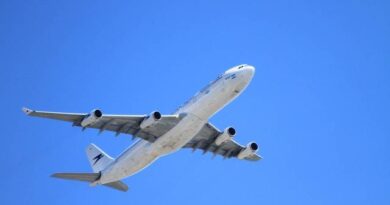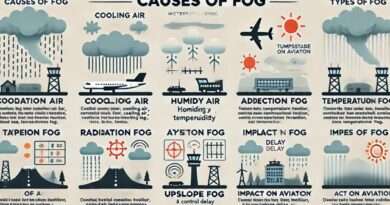Understanding Radiation Exposure for Casual Flyers and Aircrew: Risks and Realities
Air travel exposes passengers and crew to higher levels of cosmic radiation than they would experience at ground level. While the general public faces minimal risks during occasional flights, frequent flyers and aircrew have unique concerns. In this article, we explore the science behind radiation exposure at altitude, its potential health implications, and what measures can be taken to mitigate risks.
What is Cosmic Radiation?
Cosmic radiation originates from the sun and other celestial bodies. While the Earth’s atmosphere and magnetic field shield us from most cosmic rays, this protection weakens significantly at high altitudes. As a result, passengers and aircrew are exposed to increased radiation levels while flying, particularly on long-haul flights.
Radiation Levels at Altitude
At cruising altitudes (30,000–40,000 feet), atmospheric shielding is thinner, allowing more cosmic radiation to penetrate. Research by the Federal Aviation Administration (FAA) reveals that:
- The average radiation dose during a typical transatlantic flight is about 0.05 millisieverts (mSv), which is roughly equivalent to a chest X-ray.
- Aircrew members often receive annual doses ranging from 2 to 5 mSv, depending on their flight schedules and routes.
Why Polar Routes Pose Higher Risks
Flights that pass over polar regions experience heightened radiation exposure due to the Earth’s magnetic field. This magnetic field, strongest at the equator, offers less protection at the poles, making flights like those between North America and Asia particularly susceptible.
Comparing Radiation Exposure: Flyers vs. Ground-Level Activities
To contextualize the risks:
- Casual flyers taking a few trips annually face negligible health risks.
- Frequent flyers and aircrew, however, may accumulate radiation doses over time. For instance, Tom Stuker, who logged over 21 million miles, likely received radiation exposure comparable to several hundred chest X-rays.
Potential Health Implications
While the risks for occasional travelers are minimal, frequent exposure can pose health concerns for aircrew, including:
- Increased Cancer Risk: Studies suggest a slight elevation in the risk of skin and breast cancer for pilots and cabin crew.
- Cataracts: Ionizing radiation exposure has been linked to higher rates of cataracts among aircrew.
According to the International Commission on Radiological Protection (ICRP), aircrew are classified as radiation workers, underscoring the need for monitoring their exposure.
How Safe Are Airport Scanners?
Some travelers worry about radiation exposure from airport security scanners. However, these devices contribute only a fraction of the radiation compared to what one encounters during a flight. For context, a single backscatter X-ray scan exposes individuals to less than 0.00001 mSv, far below the dose from flying.
Managing and Monitoring Radiation Risks
Organizations such as the FAA and the European Aviation Safety Agency (EASA) regulate radiation exposure for aircrew to ensure it stays within safe limits. Recommended strategies include:
- Flight Scheduling: Reducing time spent on high-altitude or polar flights.
- Health Monitoring: Regular medical check-ups to assess long-term impacts.
- Awareness: Training aircrew to understand and mitigate radiation risks.
Tips for Casual Flyers
For the average traveler, radiation exposure during flights is not a cause for alarm. To minimize exposure:
- Choose flights at lower altitudes when possible (e.g., short-haul domestic routes).
- Stay informed about solar activity, as radiation levels increase during solar flares.
Conclusion: Balancing Risk and Reality
Radiation exposure is an unavoidable part of air travel, but the associated risks are well-studied and managed, particularly for aircrew. For casual flyers, the exposure levels are minimal and far outweighed by the convenience and safety of modern aviation. By understanding the science and regulations in place, both passengers and crew can make informed decisions about their health and well-being.
FAQs
- 1. Is flying dangerous due to radiation?
No. For casual flyers, radiation exposure during flights is minimal and poses no significant health risk. - 2. How can aircrew stay safe?
Aircrew are monitored under strict regulations to ensure their radiation exposure remains within safe limits. They can also manage risks by adjusting flight schedules and routes. - 3. Do frequent flyers face cancer risks?
While the risk is slightly elevated for frequent flyers and aircrew, it remains low and manageable with proper health monitoring.
For more articles click.


